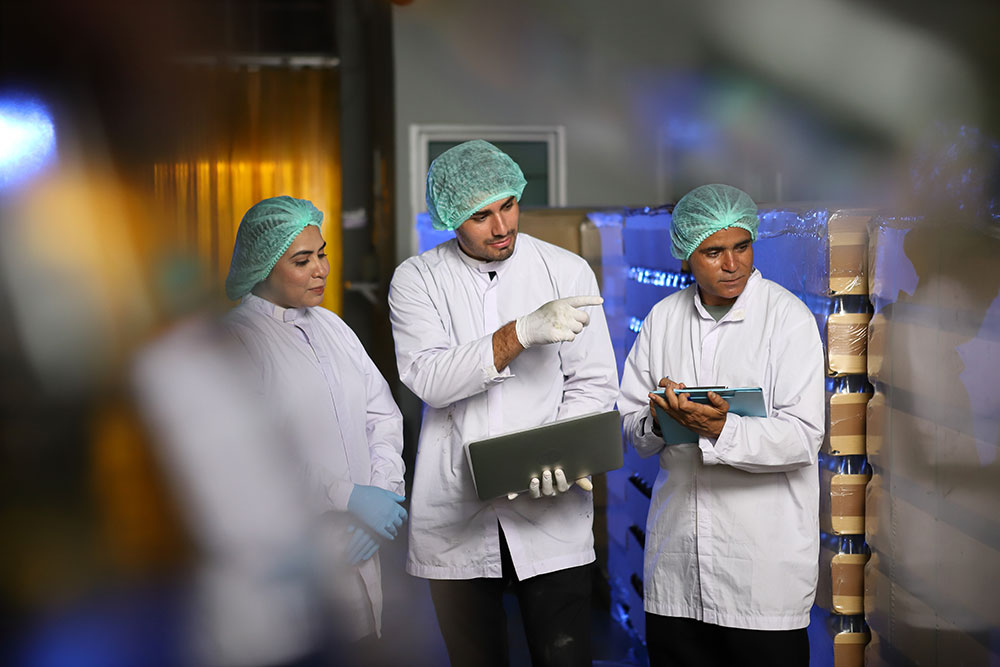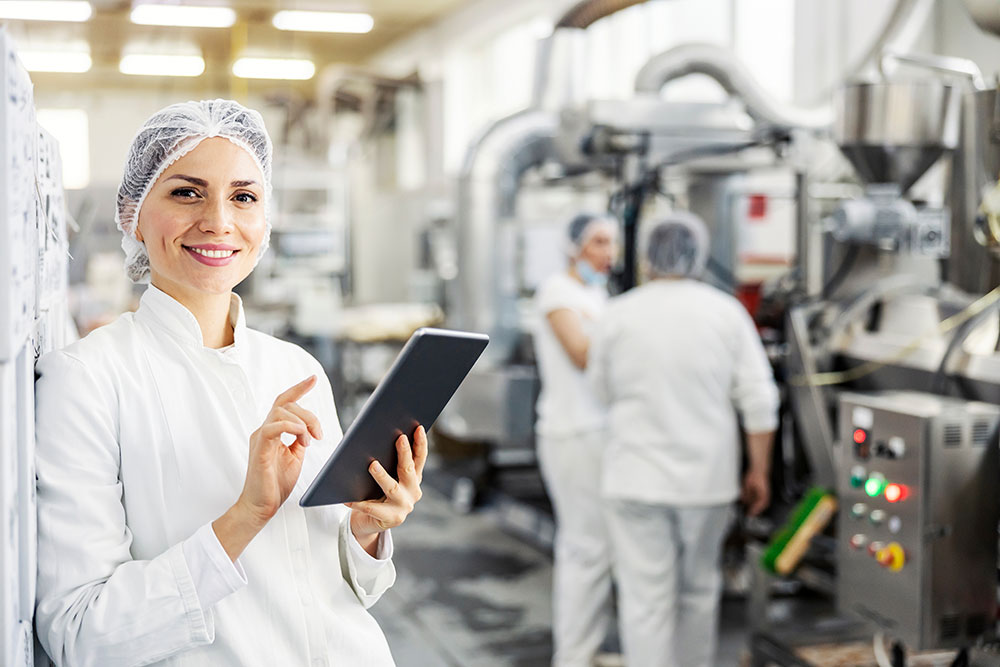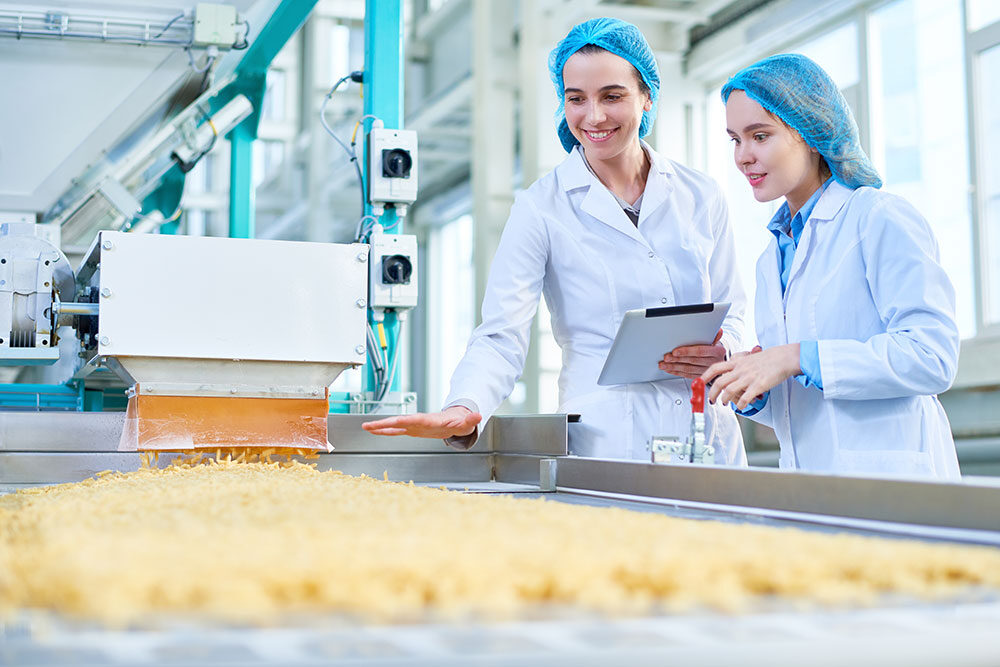Today, cases of contaminated food products occur frequently with all types of food. A lot of it comes down to poor food safety practices.
Food safety practices are meant to help ensure that our food is safe to consume. They are practices that everyone should abide by, from the workers in the food production facilities to you at home. Some are simple and obvious, others you may have never considered.
Here are 11 proper food safety practices for homeowners, restaurants, and those that make retail food.
THE BASICS: 4 FOOD SAFETY PRACTICES TO START WITH
While some of these may seem obvious, it is always important to address them as they are four of the most basic food after practices essential to safe food handling. These are practices that everyone should follow, and the 4 food safety practices include:
1. Cleanliness
Cleaning is the first and most basic practice of food safety. Cleaning includes various aspects, like hand washing, tools and surfaces, and produce.
Hand Washing
 Handwashing is the most basic of food safety practices. This means using soap and water and scrubbing for at least 20 seconds and making sure that you are thorough. You need to get the backs of your hands, between the fingers, and under your nails. Then, rinse and dry your hands with a clean paper towel. Critical times to wash your hands include:
Handwashing is the most basic of food safety practices. This means using soap and water and scrubbing for at least 20 seconds and making sure that you are thorough. You need to get the backs of your hands, between the fingers, and under your nails. Then, rinse and dry your hands with a clean paper towel. Critical times to wash your hands include:
- Before, during, and after food prep
- After handling raw foods like meat, poultry, seafood, and eggs
- Before you eat
- After using the bathroom
- After changing diapers or helping a child with the restroom
- After touching animals, pets, animal food, or dealing with animal waste
- After touching garbage
- Before and after caring for somebody who is ill
- Before and after treating wounds
- After blowing your nose, coughing, or sneezing
Wash Surfaces and Utensils After Each Use
Another of the critical food safety practices in the kitchen is to wash everything you use after each use. This includes cutting boards, plates, utensils, and countertops with hot water and soap, especially after working with raw foods.
Dishcloths should be washed frequently as well, using a hot cycle.
Cleaning Fruits and Vegetables

Another of the vital food safety practices in the kitchen is to wash all of your produce correctly.
Rinse fruits and vegetables under running water without any soap, bleach, or other commercial washes.
- Rinse fruits and vegetables before peeling, removing skin, or cutting away damaged pieces.
- Scrub firmer produce, like melons and cucumbers, using a produce brush.
- Dry produce with a paper towel or clean cloth.
- Any produce labeled "pre-washed" is safe for immediate consumption.
Meat, poultry, eggs, and seafood should not be washed to avoid the potential spread of germs.
2. Separate
Separation is one of the safety practices that help prevent cross contamination.
- Use separate cutting boards for food you don't need to cook and another for raw meat, poultry, and seafood, and make sure to replace them as they become worn.
- Use separate plates and utensils for raw and cooked foods.
- Wash plates, utensils, and cutting boards thoroughly with hot, soapy water.
- As you shop and at home, separate raw meat, poultry, seafood, and eggs from other foods.
- Use plastic bags, if possible, for meats, poultry, and seafood packages.
- Keep raw foods in a separate bag when you check out.
- At home, keep raw meats, poultry, and seafood in containers and freeze them if you don't intend to use them within a few days.
- Keep eggs in their original carton and store them in the main compartment.
3. Cook
For foods to be safe to consume and to eliminate the risk of salmonella, food safety practices state that the food needs to be cooked to a temperature that kills germs that make you sick. That temperature depends on the food, and you can use a food thermometer to ensure you reach the appropriate temperature.
- If you aren't serving food immediately after cooking, keep it out of the "danger zone" of germ growth by maintaining a temperature of 140ºF or above.
- If using the microwave, read the instructions and follow them precisely to ensure that the food cooks thoroughly.
- Stir foods in the middle of heating to help ensure that the middle is heating properly.
- Microwaved foods should reach a temperature of 165ºF.
4. Chill
It is vital to refrigerate perishable foods within 2 hours of purchase. This is another of the critical food safety practices that help prevent the growth of bacteria.
- Bacteria that cause food poisoning can multiply between 40º F and 140º F.
- Proper food safety practices mean your refrigerator should be set at 40º F or below and your freezer at 0º F or below.
- If perishable foods are exposed to temperatures of 90º F or higher, refrigerate them within one hour.
- Refrigerate leftovers promptly by placing them in a shallow container.
- Never thaw or marinate foods on the counter; keep them in the refrigerator.
- Freezing doesn't kill harmful germs but will keep food safe until you are ready to cook it.
6 Other Good Food Safety Practices
The four things listed above form the basis for ensuring adequate food safety practices at home, in restaurants, and anywhere else food is served. There are still more, however. Some other practices to note are:
5. Install a Sanitary Drainage System

One of the essential food safety practices in restaurants is installing a food-grade floor drain system. Sanitary drainage systems, like those from FoodSafe Drains, help with wastewater management by allowing the ground to dry and preventing bacteria growth and contamination. This, in turn, helps maintain a clean, sanitary facility.
6. Familiarize Yourself with Local Health Codes
One of the food safety practices in restaurants is to familiarize yourself with local health codes. State and county health departments enforce local, state, and federal health regulations. It is vital to know these codes to avoid fines and violations that can shut your business down.
7. Label Everything

Another good safety practice is labeling everything once you open it. If you're putting food in a different container, your label should clearly state what it is and when you opened it or cooked it. That way, you can track how long you have to eat, use, freeze, or throw out food products. For freezing large quantities, you can also put how much is in the container so you'll know when you need it in the future. Labeling is something both commercial and home kitchens can benefit from.
Labels are also good for dry goods, so you can track when they were opened and know how long you have to use them.
8. First In, First Out
Organize your kitchen so the oldest food products are at the front of your cabinets and the newest towards the back. This helps ensure you use the oldest things first and prevents food waste. You can also use this idea for your fridge and freezer to minimize waste.
9. Training Staff Members
It is crucial to take the time to train employees to avoid bad food safety practices in a restaurant setting. This includes making sure that they understand proper handwashing techniques, how to avoid cross-contamination, the appropriate attire for kitchens, etc. You also want to make sure they are educated in cleaning and sanitation procedures.
Home cooks can apply the same ideas to teach their children how to work in the kitchen. Starting young and letting them help you cook as you teach them proper food safety practices will help ensure they know how to maintain a clean, sanitary kitchen when they grow up.
10. Avoid Overpacking the Refrigerator

While stuffing your refrigerator to the limit may seem like a good idea, it is another of the bad food safety practices to avoid. Overfilling can affect air circulation and prevent it from adequately maintaining the temperature. It can result in your food going bad, which means more food is wasted.
11. Keep Appliances Clean
Kitchen appliances like the refrigerator, microwave, and dishwasher can harbor harmful bacteria if you don't clean them regularly. Follow the manufacturer's instructions to ensure you use the proper cleaning tools and products and don't cause damage. You can also create a schedule to help you create a routine for cleaning your appliances to keep them safe and in top working order.
ADD FOOD SAFETY PRACTICES TO EVERYDAY LIFE
Food safety is crucial to avoiding contamination and foodborne illness. When homeowners fail to follow these practices, they only risk making themselves sick. When restaurant or retail food workers fail, they risk making their customers sick, which can have severe consequences. These practices aren't difficult, and implementing them makes everyone safer and healthier.
Contact FoodSafe Drains today to learn how their products can help you abide by food safety practices.


